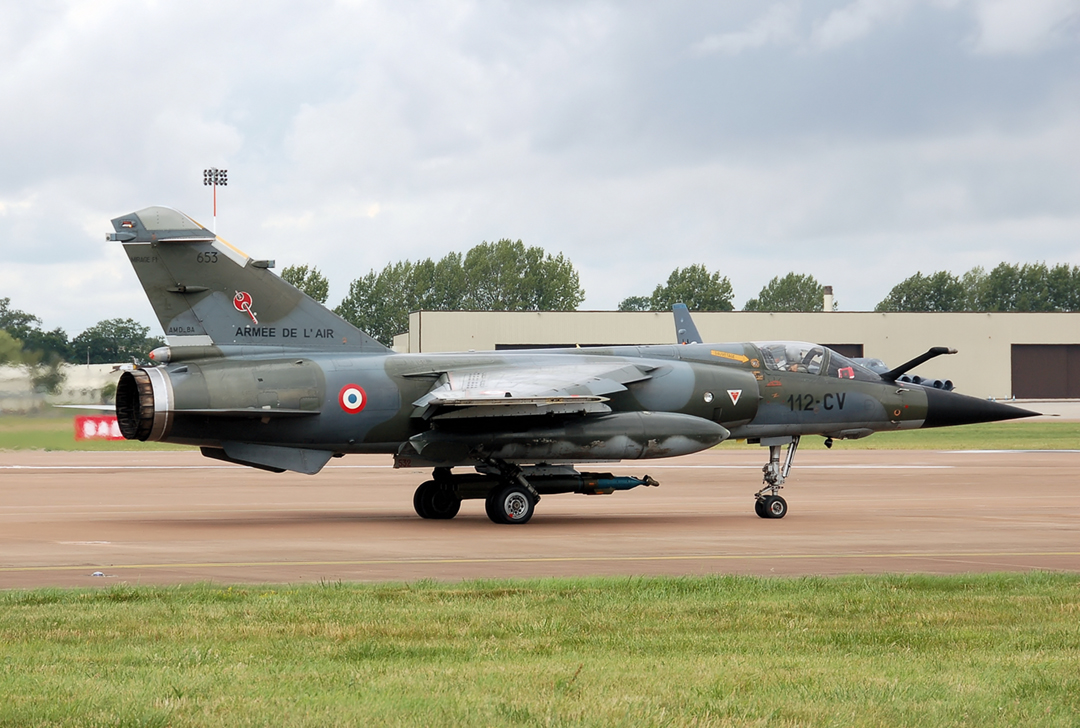
Textron Airborne Solutions recently acquired 63 F1 Mirage aircraft formerly owned by the French Air Force, like the one shown here. The company hopes to fly the aircraft as contracted Red Air for the US Air Force. Photo by Adrian Pingstone.
Textron Airborne Solutions has acquired 63 F1 Mirage aircraft formerly owned by the French Air Force, making it the “world’s largest private supersonic air force,” said Jeffrey Parker, chief executive officer of the Airborne Tactical Advantage Company (ATAC), which was bought by Textron last year in anticipation of a rapidly growing contracted Red Air market.
Of the 63 aircraft, the company plans to fly between 45-50 aircraft for Red Air. The remaining aircraft will most likely be used for spare parts or as reserves if the company needs to bring additional aircraft online.
As the Air Force looks to solve a growing pilot shortage, the service is looking to hire out nearly 40,000 hours of Red Air. The multi-award contract is expected in January 2019. It will cover 27,234 sorties per year at 11 bases, including 11,250 hours, or 7,500 sorties per year, at Nellis AFB, Nev., home of the US Air Force Weapons School.
In order to keep Red Air an organic USAF capability, Air Combat Command boss Gen. Mike Holmes told reporters at ASC17 he’d have to trade an operational fighter squadron for an aggressor squadron and that’s not something he’s willing to do. He said eventually he would like to see that capability brought back into the service, but that’s a long ways off.
ATAC, which has flown nearly 50,000 hours of contracted adversary air—mostly for the US Navy—since the late 1990s, is hoping its most recent procurement will give it a leg up in that competition.
“Industry is going to be working really hard to address the full requirement for the Air Force because it’s a massive requirement and it requires a whole lot of airplanes. I think the calculations we ran were about 140-150 aircraft will be required to satisfy the Air Force requirement. And aircraft are a limiting factor when standing up and responding to these requirements because there is a finite number of them available and supportable in the world,” Parker told Air Force Magazine.
Though the third-generation Mirage fleet was built in the 1980s, Parker said the aircraft have “a lot of life left and are highly upgradeable, which is key.” The company plans to overhaul the aircraft’s avionics, and other modifications that are specifically catered to USAF requirements, which are still being finalized. Holmes said the service is currently working to take advantage of the work the Navy has already done on contracted aggressor air and intends to finalize its own requirements this fall.
Overall, the Textron package included 63 jets, 151 spare engines, and six million spare parts and equipment. Company officials said they are still looking to procure additional aircraft, though any future fleets likely would be smaller.
“It’s a massive package and we intend to maximize these aircraft for the emerging requirements,” said Parker.
Work will be conducted in Europe and the US, though company officials could not give specifics on the US locations because negotiations are still underway.
It’s not clear exactly how much the Air Force plans to spend on the aggressor contracts, but it will be several billion dollars, said Parker. Even that is significantly cheaper than keeping the capability in house.
“Historically, we’ve been anywhere from half to one-third the cost of the aircraft we are flying against,” said Parker.
Parker acknowledged that others in industry were attempting to procure the French fleet. Though he didn’t specify any specific competitors, Draken International recently announced it had closed a deal with the Spanish Air Force for 20 Mirage F1 fighters, which will complement its existing fleet currently flying on contract at Nellis, supporting the Air Warfare Center.
See also: Filling the Red Air Gap.